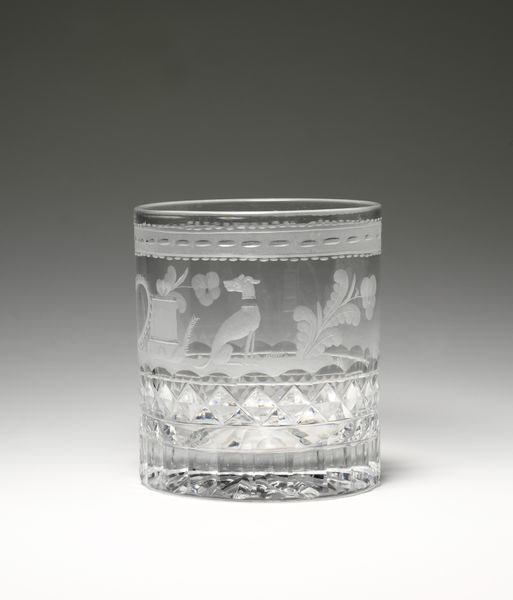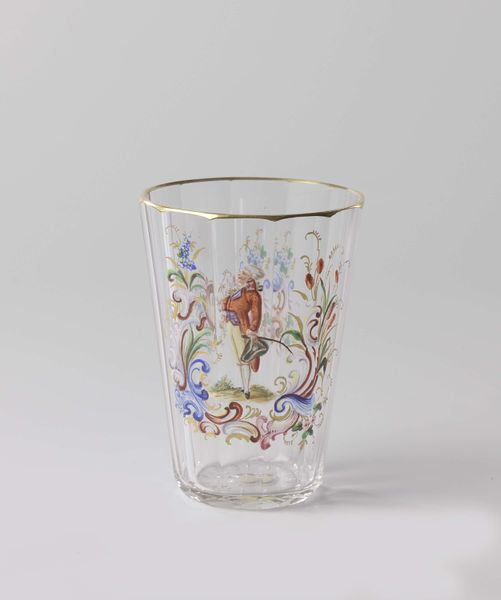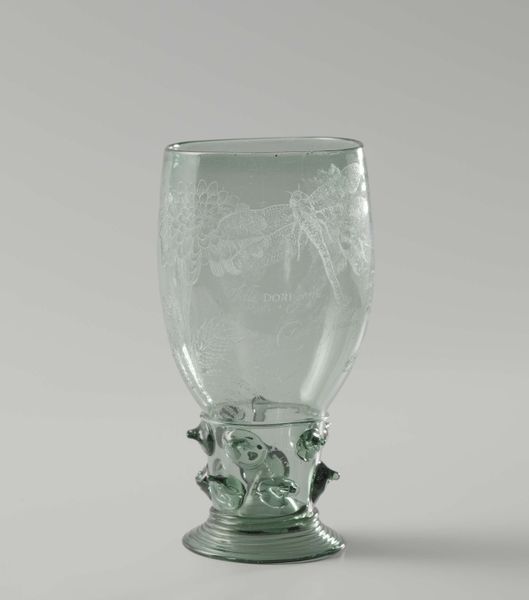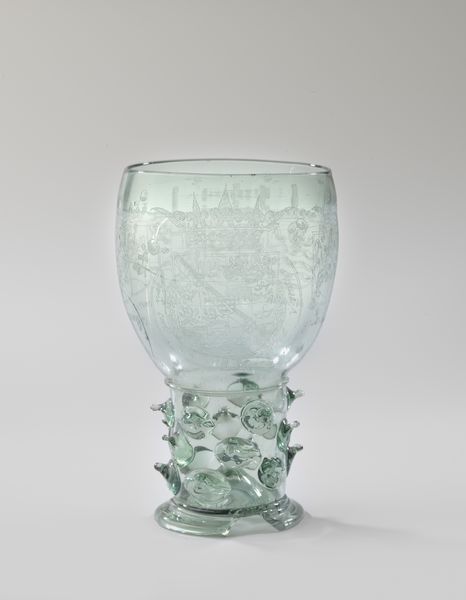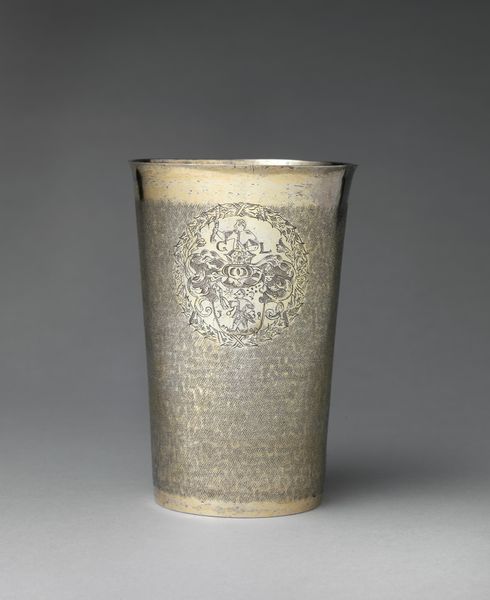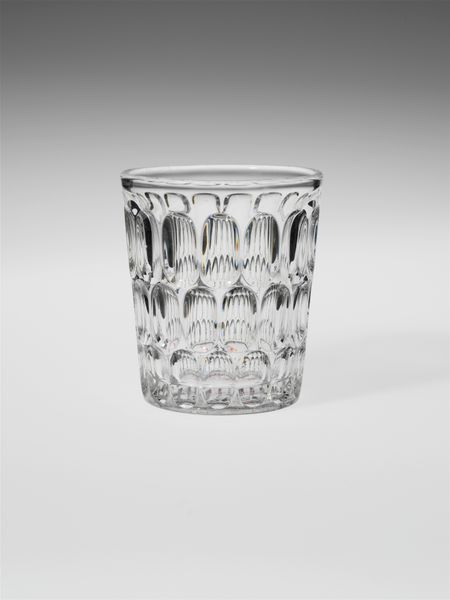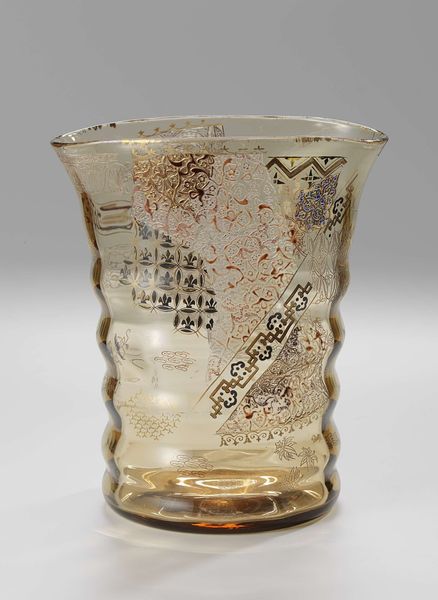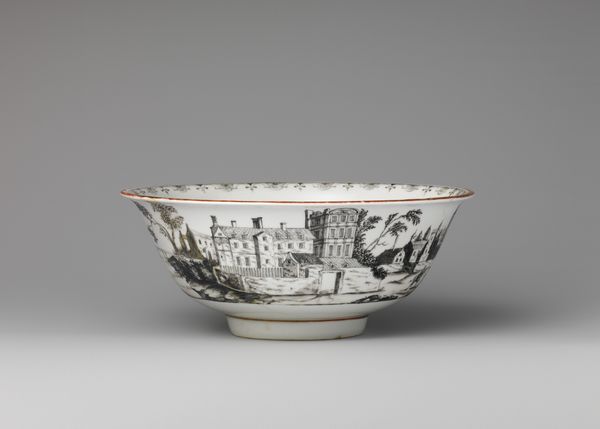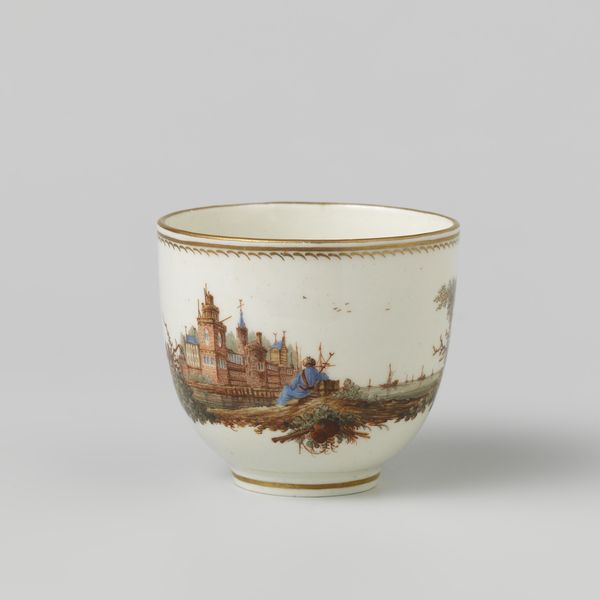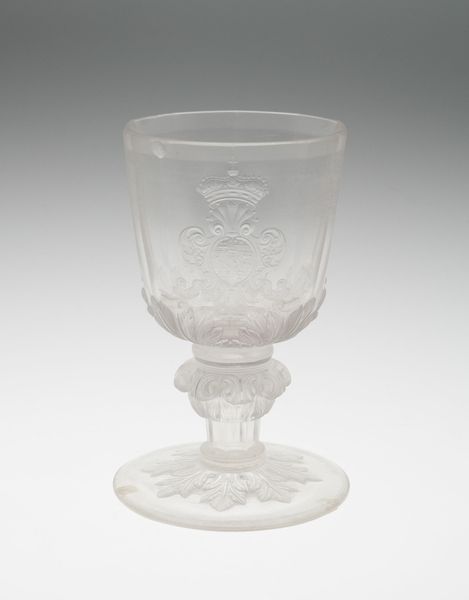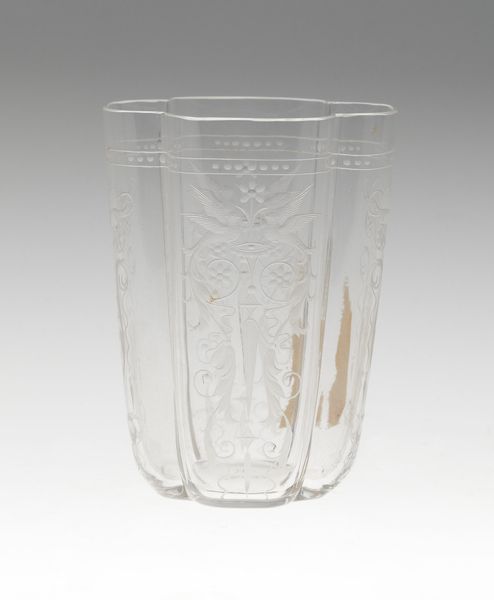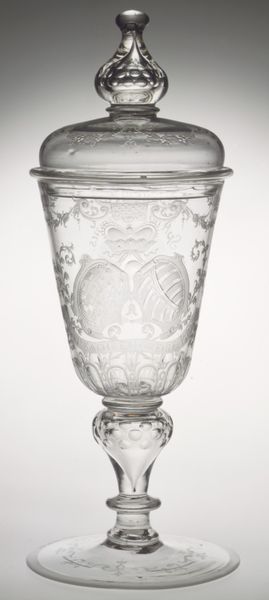
painting, ceramic, glass
baroque
painting
landscape
ceramic
glass
ceramic
decorative-art
Dimensions: 7.9 × 8.1 cm (3 1/8 × 3 3/16 in.)
Copyright: Public Domain
Editor: Here we have a beaker by Johann Schaper, dating to about 1665. It's a glass vessel, with what looks like enamel painting depicting a landscape. It feels almost melancholic, like a ruin in miniature. What can you tell me about this piece? Curator: This beaker, seemingly simple, provides insight into the economies of craft and luxury in the 17th century. It asks us to consider glassmaking, a specialized industry reliant on specific resources and labor. Where were the raw materials sourced? How were the glassblowers trained? And what was the social status of the painters who decorated such objects? Editor: That's fascinating! I hadn't really considered the socio-economic side of it. The beaker just seemed…pretty. Curator: The ‘prettiness’ is deceptive. The landscape imagery suggests a relationship with printed sources. Were these prints widely available? How did this affect the perception of landscapes among different social classes, who might have primarily encountered them through such objects? Editor: So, the mass production of prints potentially democratized access to landscape art, making its way onto everyday objects? Curator: Precisely. And the act of consuming from this beaker then becomes intertwined with class and aesthetic understanding. Is it art, craft, or commodity? These distinctions become blurred, urging us to examine how these labels impact the object’s value and cultural significance. Consider also, how much would this object cost for workers from the glass shop? Editor: So, looking at this object helps reveal production networks and consumption patterns in 17th century? It is like a window into past material realities, even. I’ll definitely never look at decorative art the same way! Curator: Precisely. Material analysis encourages us to dismantle our traditional understanding of art and appreciate the object as a confluence of labor, resources, and social meaning.
Comments
No comments
Be the first to comment and join the conversation on the ultimate creative platform.
